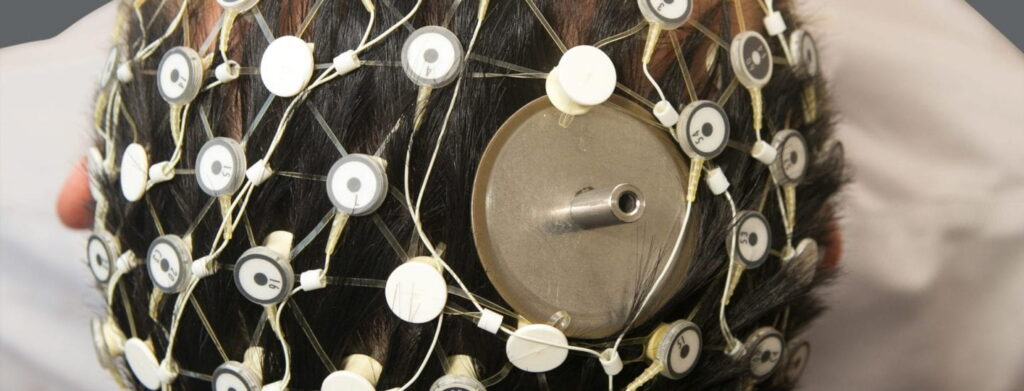
Palanca’s Lab

Sleepy Brain Lab
The Sleepy Brain Laboratory leverages sleep and circadian markers toward novel interventions and elucidation of neuropsychiatric disorders.
Research Interests
Dr. Palanca is interested in characterizing the mechanisms whereby anesthetic agents alter intracortical and subcortical neural networks and impair cognitive processes to generate unconsciousness. The question of how anesthetic agents induce reversible states of unconsciousness is of central importance in the science of anesthesiology. The answers to this question have obvious importance for understanding the neural circuitry underlying cognitive function and developing safer and better approaches to administering and monitoring general anesthesia.
In 2010, Dr. Palanca was awarded a two year Mentored Research Training Grant from the Foundation for Anesthesia Education and Research (FAER) to investigate the neural correlates of anesthetic-induced unconsciousness in functional magnetic resonance imaging (fMRI) and electroencephalography (EEG) signals. This project combines his background in primate neurophysiology and clinical anesthesiology with training in EEG and fMRI toward the conduct of translational research studies involving anesthetized human volunteers. He will assess the states of cortical connectivity at anesthetic gas concentrations flanking the important point of loss of responsiveness. As different brain monitors designed for preventing unintended return of consciousness function via analysis of either spontaneous or evoked neural activity, he will assess cortical connectivity both in the context of a resting state and in the context of individuals performing a task. This project should clarify the relationships among networks of critical cortical and subcortical areas, impairment of cognitive functions induced by anesthetics, and surface electrical activity.
Honors and Awards
| 2010 | Mentored Research Training Grant, Foundation for Anesthesia Education and Research (FAER) |
| 2010 | Postdoctoral Scholar, Washington University Clinical Research Training Center (K30) |
| 2010 | Election to Alpha Omega Alpha Honor Medical Society, Washington University Chapter |
| 2007 | Foundation for Anesthesia Education and Research (FAER) Scholar Award |
| 2001-2003 | National Eye Institute Vision Sciences Predoctoral Training Grant |
| 1997 | University of Washington President’s Medal (most distinguished record at graduation) |
| 1996 | Barry M. Goldwater Scholarship for Excellence in Education |
| 1996 | Election to Washington Alpha Chapter, Phi Beta Kappa |
| 1996 | Howard Hughes Undergraduate Summer Research Internship |
| 1995 | University of Washington Junior Medal for High Scholarship |
| 1995 | University of Washington Undergraduate Research Stipend |
| 1994 | National Academy of Science, Space, and Technology Scholarship |
Research Team
Marcus Raichle, MD — Primary Mentor
Evan Kharasch, MD, PhD — Secondary Mentor
Jane Blood, RN — Nurse Coordinator
Alex Evers, MD — Collaborator
Michael Avidan, MBBCh — Collaborator
Biyu He, PhD — Collaborator
Eric Leuthardt, MD — Collaborator
Publications
PEER-REVIEWED PUBLICATIONS
Kertai, M.D., Pal, N., Palanca, B.J.A., Lin, N., Searleman, S.A., Zhang, L., Burnside, B.A.,
Finkel, K.J., Avidan, M.S; on behalf of the B-Unaware Study Group. Association of perioperative risk factors and cumulative duration of low bispectral index with intermediate- term mortality following cardiac surgery in the B-Unaware Trial. Anesthesiology. 2010: 112(5).
Palanca, B.J.A., DeAngelis, G.C. Does neuronal synchrony underlie visual feature grouping? Neuron. 2005: 46(2): 333-46.
Palanca, B.J.A., DeAngelis, G.C. Macaque middle temporal neurons signal depth in the absence of motion. J. Neurosci. 2003; 23(20):7647-58.
Potter, A.J., Gollahon, K.A., Palanca B.J., Harbert, M.J., Choi, Y.M., Moskovitz, A.H., Potter, J.D., Rabinovitch, P.S. Flow cytometric analysis of cell cycle phase specificity of DNA damage induced by radiation. Carcinogenesis 2002; 23(3): 389-401.
Brown, M.G., Scalzo, A.A., Stone L.R., Clark P.Y., Du Y., Palanca B., Yokoyama W.M. Natural killer gene complex (Nkc) allelic variability in inbred mice: evidence for Nkc haplotypes. Immunogenetics 2001; 53(7): 584-91.
Xu, C., Mao, D., Holers, V.M., Palanca, B., Cheng, A.M., Molina, H. A critical role for murine complement regulator crry in fetomaternal tolerance. Science 2000; 287(5452): 498-501.
Glogovac, J.K., Pierce, R., Palanca, B.J.A., Rabinovitch, P.S. Cytokeratin immunoflourescence in DNA analysis of paraffin extracted cells. Clin. Immunol. Newsletter 1996; 16(12): 157-61.
NON-PEER REVIEWED PUBLICATIONS
Avidan, M.S., Palanca, B.J., Glick, D., Jacobsohn, E., Villafranca A., O’Connor, M., Mashour, G.A., and Study Group BAG-RECALL. Protocol for the BAG-RECALL Clinical Trial: A prospective, multi-center, randomized, controlled trial to determine whether a bispectral index- guided protocol is superior to an anesthesia gas-guided protocol in reducing intraoperative awareness with explicit recall in high risk surgical patients. BMC Anesthesiol. 2009: 9(1): 8.
Palanca, B.J.A., Mashour, G.A., and Avidan M.S. Processed EEG in depth of anesthesia monitoring: controversies and future prospects. Curr Opin Anaesthesiol. 2009: 22(5): 553-9.
BOOKS AND BOOK CHAPTERS
Palanca, B.J.A., Searleman, A, and Avidan, M.S. “Current Controversies in Intraoperative Awareness II.” Consciousness, Awareness, and Anesthesia. Ed. George A. Mashour. Cambridge University. 2010.
Palanca, B.J.A. Neuronal synchrony fails as a general mechanism underlying feature binding. Doctoral Dissertation. 2005